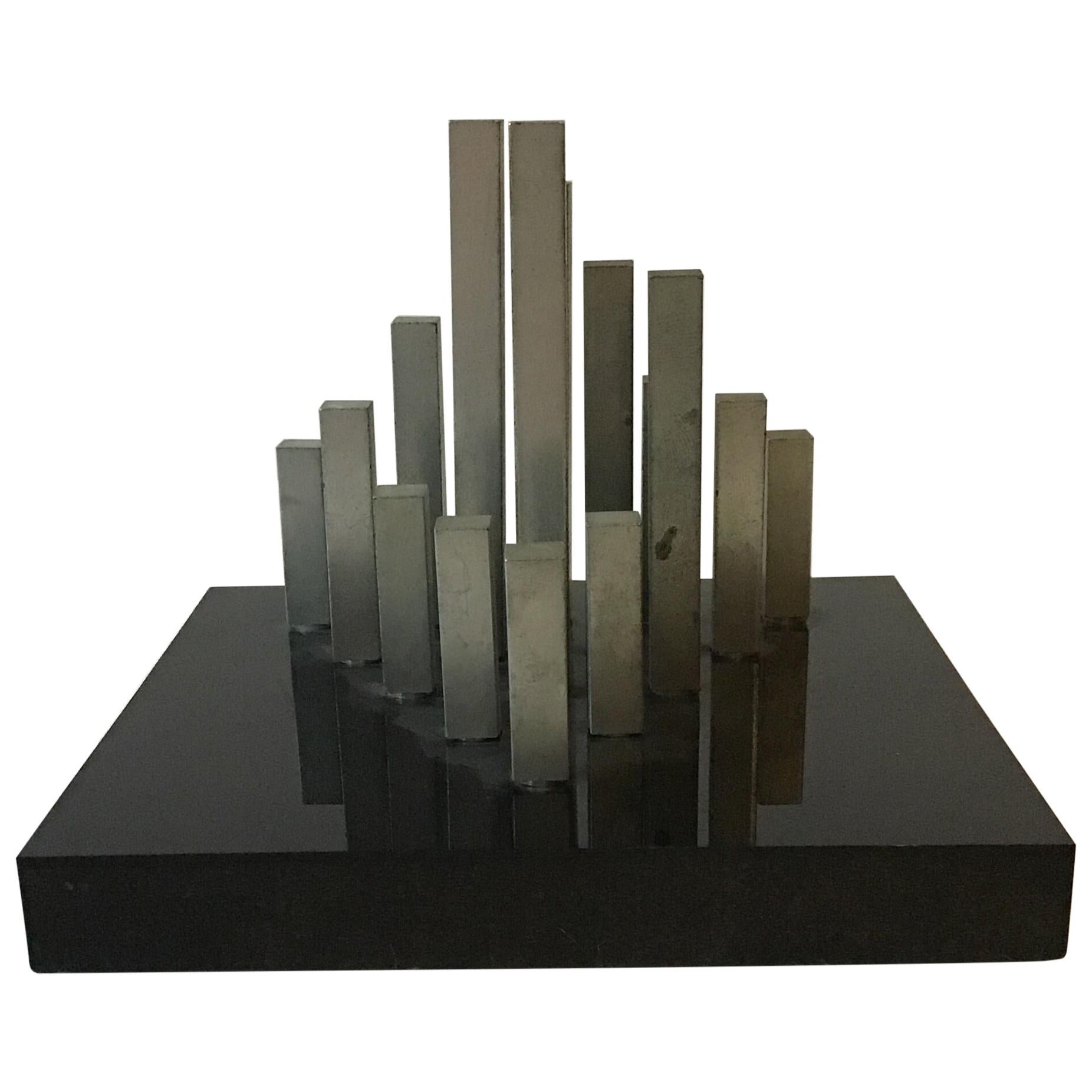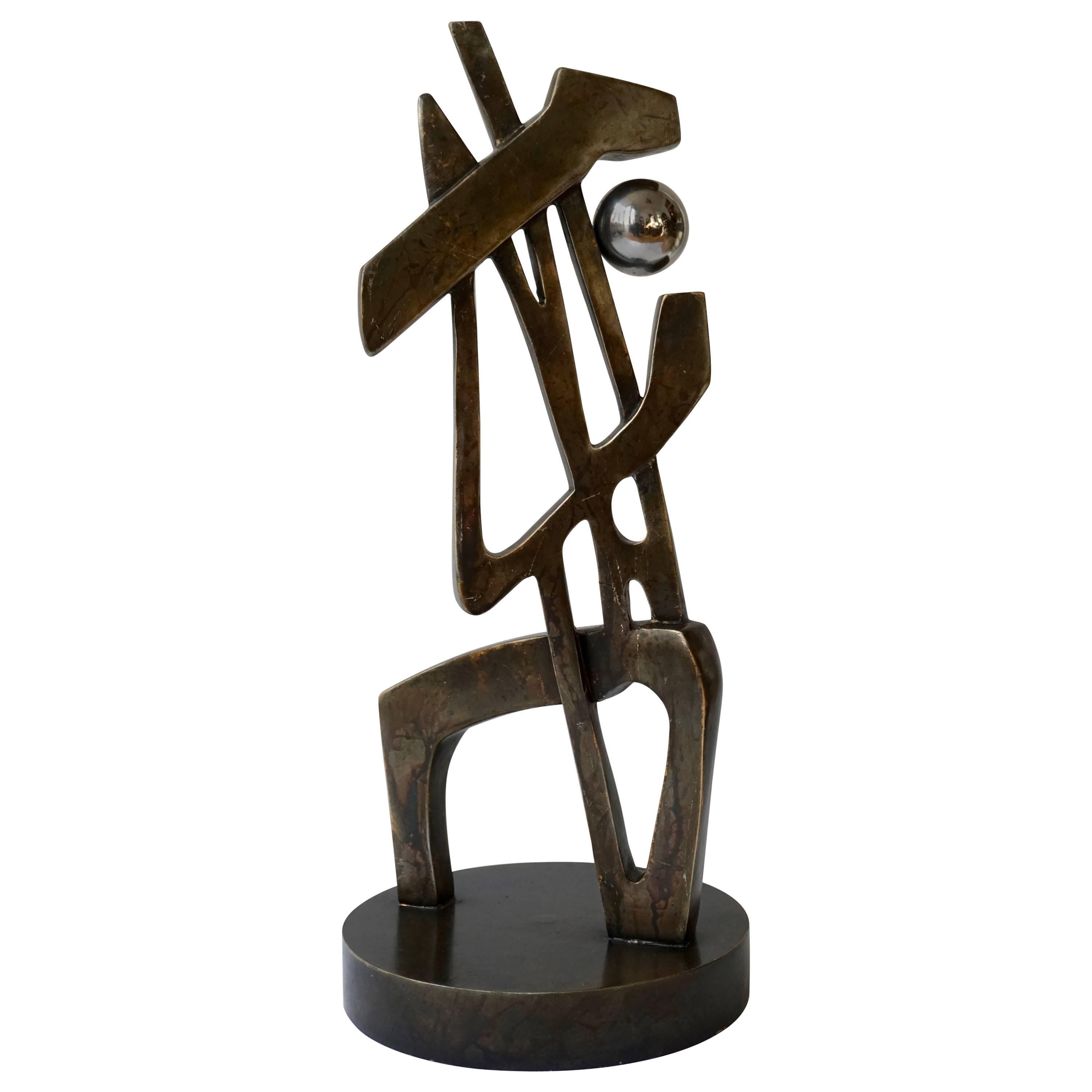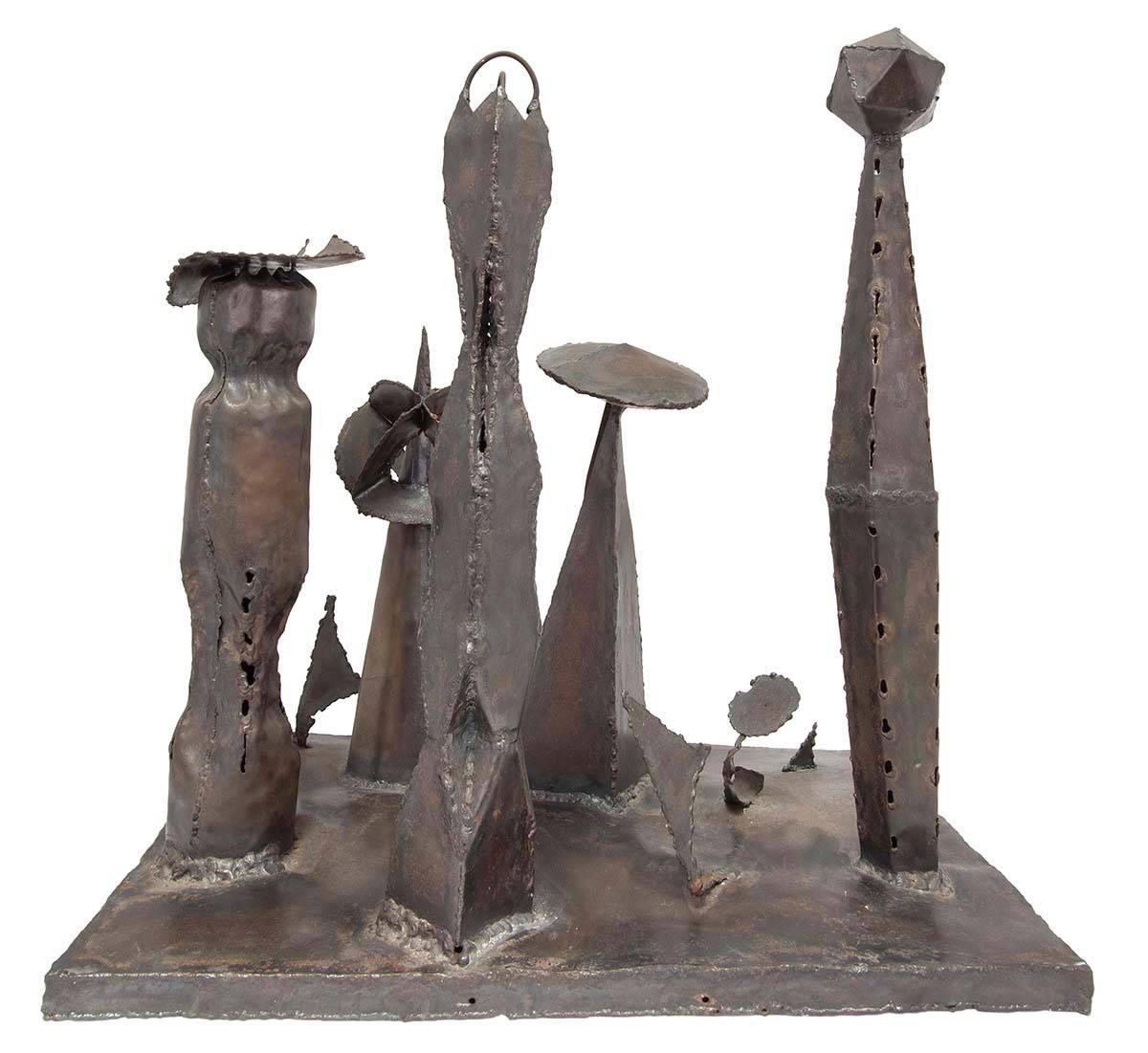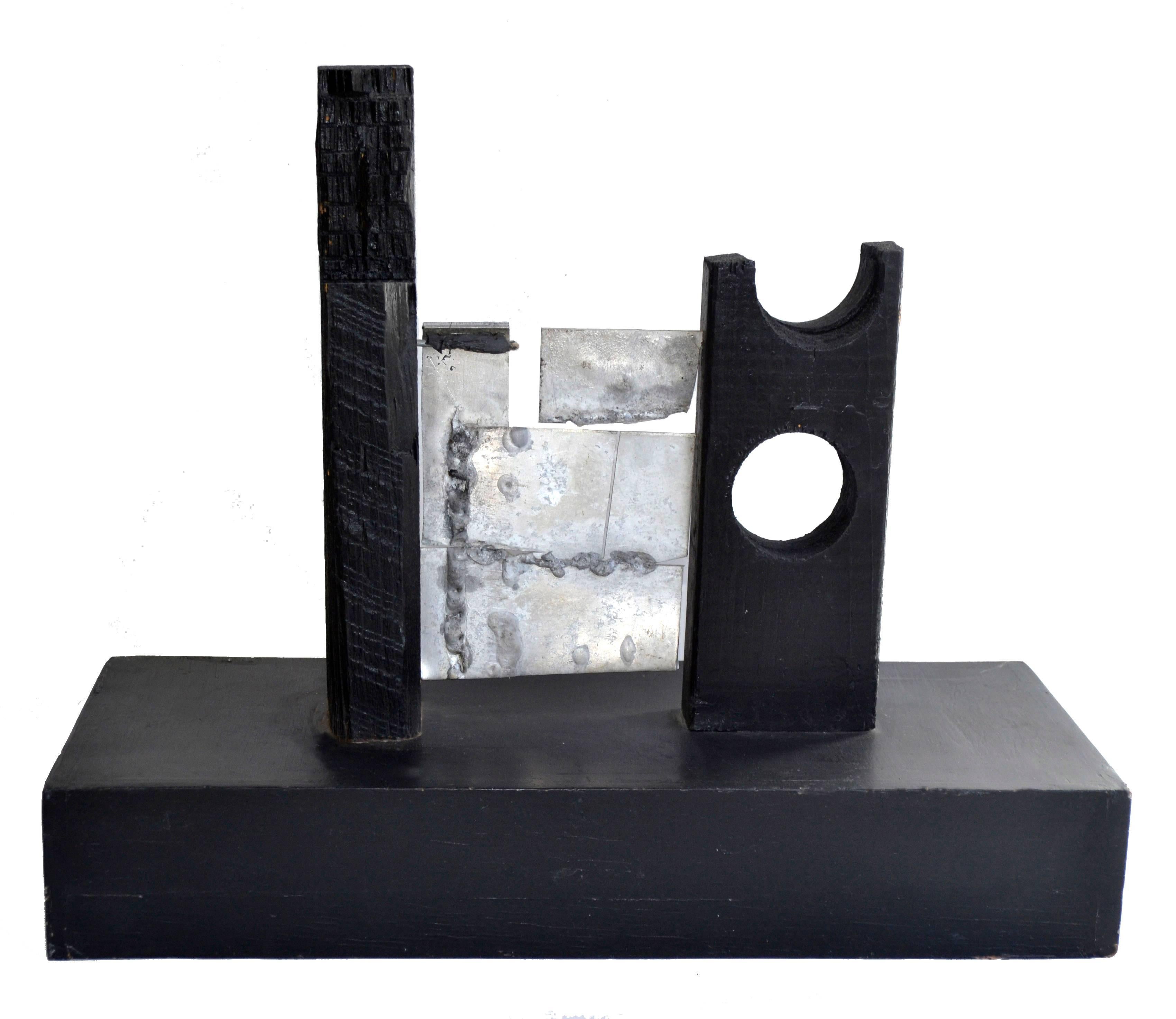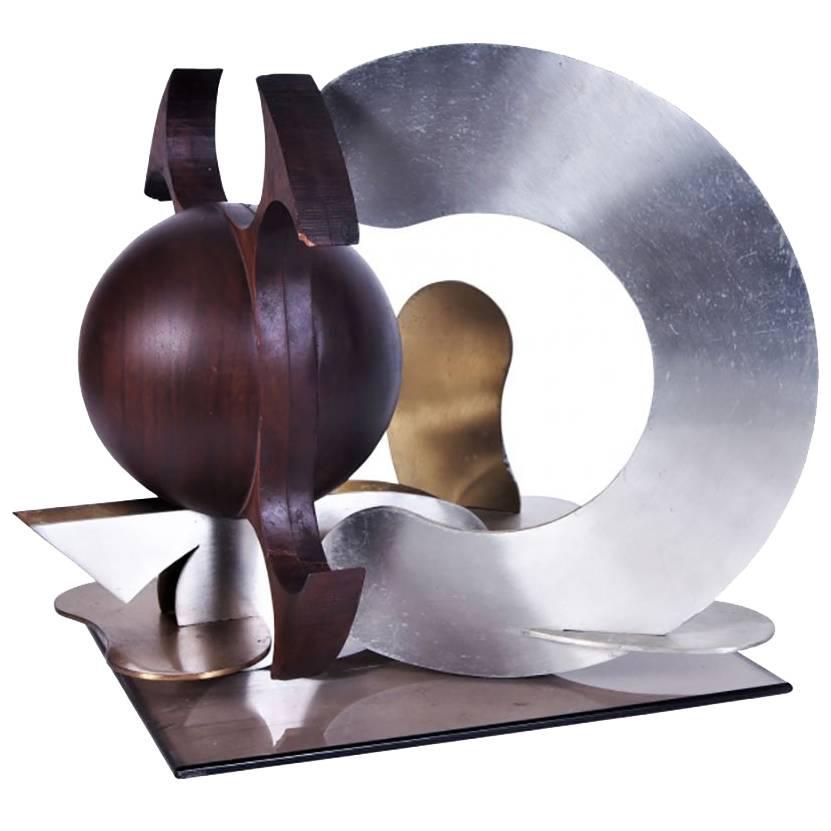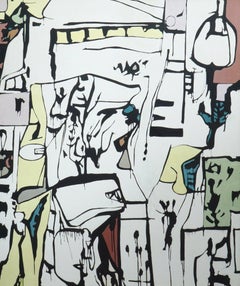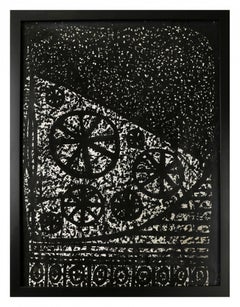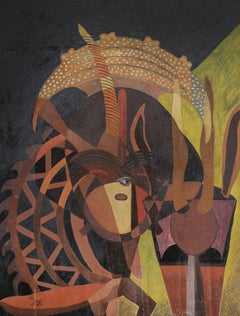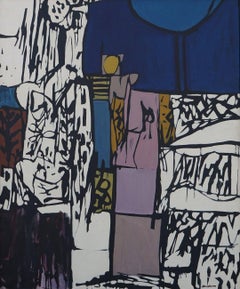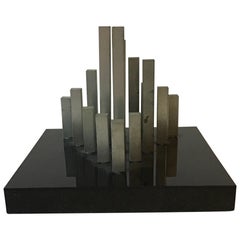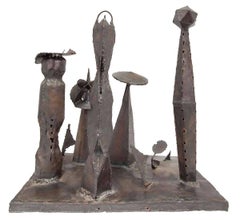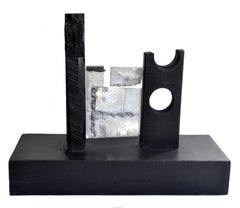Items Similar to Abstract Cityscape Sculpture, Mid 20th Century
Video Loading
Want more images or videos?
Request additional images or videos from the seller
1 of 13
UnknownAbstract Cityscape Sculpture, Mid 20th Centuryc. 1950-60
c. 1950-60
$2,200
£1,661.35
€1,902.10
CA$3,106.98
A$3,392.07
CHF 1,778.33
MX$41,198.03
NOK 22,208.39
SEK 20,970.64
DKK 14,197.11
About the Item
Abstract Cityscape, c. 1950-60
Painted mixed metal
19.25 in. h. x 19.5 in. w. x 11.5 in. d.
About the Seller
5.0
Platinum Seller
Premium sellers with a 4.7+ rating and 24-hour response times
Established in 1975
1stDibs seller since 2022
39 sales on 1stDibs
Typical response time: <1 hour
- ShippingRetrieving quote...Shipping from: Beachwood, OH
- Return Policy
Authenticity Guarantee
In the unlikely event there’s an issue with an item’s authenticity, contact us within 1 year for a full refund. DetailsMoney-Back Guarantee
If your item is not as described, is damaged in transit, or does not arrive, contact us within 7 days for a full refund. Details24-Hour Cancellation
You have a 24-hour grace period in which to reconsider your purchase, with no questions asked.Vetted Professional Sellers
Our world-class sellers must adhere to strict standards for service and quality, maintaining the integrity of our listings.Price-Match Guarantee
If you find that a seller listed the same item for a lower price elsewhere, we’ll match it.Trusted Global Delivery
Our best-in-class carrier network provides specialized shipping options worldwide, including custom delivery.More From This Seller
View AllGarden, Abstract Expressionist Mid-Century Modern geometric work
By Richard Andres
Located in Beachwood, OH
Richard Andres (American, 1927-2013)
Garden, 1972
acrylic on canvas
signed, dated and titled verso
59.5 x 50 inches
Richard Andres was born in Buffalo, New York in 1927. A graduate of the Cleveland Institute of Art in 1950, he was immediately drafted and served for two years in the army as a mural painter. He received his Master of Arts from Kent State in 1961. A frequent exhibitor at galleries and museums and winner of multiple May Show prizes, Andres taught art in the Cleveland Public Schools for 28 years, as well as teaching the University of Buffalo, the Cleveland Institute of Art and the Western Reserve University.
Very little in Richard Andres’ childhood would have predicted his love of classical music, mid-century-modern architecture and certainly not his lifelong passion for art and in particular abstract art. Richard’s father, Raymond, had no more than a third-grade education, and his mother, Clara, was one of thirteen children – only three of whom lived into adulthood and none of whom attended high school.
They lived, when Richard was a boy, in a dingy area of Buffalo, NY in a walk-up apartment situated above a tavern. Raymond and Clara supplemented the income from their factory jobs in the bar downstairs with Raymond playing ragtime on the piano and Clara serving drinks. This often left Richard and his two older brothers at home alone to fend for themselves. The two older boys, Raymond and Russell, were - unlike Richard- rather rough and tumble and entertained themselves with stickball, boxing and the like. Richard, on the other hand, from a very young age liked to draw, or better yet even, to paint with the small set of watercolors he received for Christmas one year. Paper, however, at the height of the depression, was hard to come by. Luckily, Clara used paper doilies as decoration for the apartment and Richard would contentedly paint and then cut up doilies, gluing the pieces together to create collages.
At eight-years-old, he discovered the Albright-Knox Museum (then known as the Albright Art Gallery) and spent several hours a week there studying the paintings. He was particularly fond of Charles Burchfield‘s landscapes, enamored with their ‘messiness’ and thinking that they somehow captured more ‘feeling’ than works he was previously familiar with. For his tenth Christmas, he asked for and received a ‘how-to’ paint book by Elliot O’Hare. Through this self-teaching, he assembled the portfolio needed for acceptance to Buffalo Technical High School where he studied Advertising Arts. In his Junior year, he was encouraged to enter a watercolor painting, “Two Barns,” in the national 1944-45 Ingersoll Art Award Contest and was one of twelve grand prize winners – each one winning one hundred dollars. More importantly the painting was exhibited at the Carnegie Institute Galleries, which resulted in his winning a national scholarship to the Cleveland School of Art (The Cleveland Art Institute).
He flourished at the art school under the tutelage of faculty members such as Carl Gaertner, as well as that of visiting artists such as William Sommer and Henry George Keller. He would say in later years that Gaertner, in particular, influenced his attitude toward life as well as art. “Gaertner,” Andres said, “believed that there was no need to be a ‘tortured artist’, that an artist should rather enjoy beauty, family, and life in general.” Free to spend his days as he chose, he wandered the Cleveland Art Museum for most of the hours he was not attending classes or painting; the remaining time was spent drinking coffee at a local hangout with art school friends – which is where he met fellow Henry Keller scholarship winner, Avis Johnson. Richard was immediately smitten with Avis, but being rather shy, it took him the entire summer of 1948 to build up his courage to ask her out. Over that summer he ‘thought about Avis’ and worked in a diner to save money. He also used the hundred-dollar prize money won in High School to visit the first Max Beckmann retrospective in the United States at the City Art Museum in St. Louis. Over a half century later he spoke of that exhibit with a reverence usually reserved for spiritual matters, “I walked in and it was like nothing I had ever seen before... the color...It just glowed.”
Returning to campus in the Fall, the first thing he did was go to the coffee shop in hopes of finding Avis. He did, and she, upon seeing him, realized that she was also smitten with him. They quickly became known as ‘the couple’ on campus, and a year later, with Richard being drafted for the Korean war, they were quickly married by a Justice of the Peace, celebrating after with family at Avis’s Cleveland home. As a gift, faculty member John Paul Miller...
Category
1970s Abstract Expressionist Abstract Paintings
Materials
Acrylic
Large Abstract Expressionist Painting of Head, 20th Century New York Artist
By Joseph Glasco
Located in Beachwood, OH
Joseph Glasco (American, 1925–1996)
Head
1970
Ink on paper
Signed and dated lower right
39.5 x 30 inches
43 x 32.25 inches, framed
Joseph Glasco was born in Paul’s Valley, Oklahoma...
Category
1970s Abstract Expressionist Figurative Paintings
Materials
Ink
Meditation on African Sculpture, mid-century figural abstract painting
By Beni E. Kosh
Located in Beachwood, OH
Beni E. Kosh/Charles Elmer Harris (American, 1917-1993)
Meditation on African Sculpture, 1957
Oil on found wood panel
Signed and dated lower left
20 x 15 inches
Charles Elmer Harris...
Category
1950s Modern Abstract Paintings
Materials
Oil
Panama Garden, Mid-century abstract expressionist modern work
By Richard Andres
Located in Beachwood, OH
Richard Andres (American, 1927-2013)
Panama Garden, c. 1964
acrylic on canvas
signed lower right, signed and titled verso
46 x 38 inches
Richard Andres was born in Buffalo, New York in 1927. A graduate of the Cleveland Institute of Art in 1950, he was immediately drafted and served for two years in the army as a mural painter. He received his Master of Arts from Kent State in 1961. A frequent exhibitor at galleries and museums and winner of multiple May Show prizes, Andres taught art in the Cleveland Public Schools for 28 years, as well as teaching the University of Buffalo, the Cleveland Institute of Art and the Western Reserve University.
Very little in Richard Andres’ childhood would have predicted his love of classical music, mid-century-modern architecture and certainly not his lifelong passion for art and in particular abstract art. Richard’s father, Raymond, had no more than a third-grade education, and his mother, Clara, was one of thirteen children – only three of whom lived into adulthood and none of whom attended high school.
They lived, when Richard was a boy, in a dingy area of Buffalo, NY in a walk-up apartment situated above a tavern. Raymond and Clara supplemented the income from their factory jobs in the bar downstairs with Raymond playing ragtime on the piano and Clara serving drinks. This often left Richard and his two older brothers at home alone to fend for themselves. The two older boys, Raymond and Russell, were - unlike Richard- rather rough and tumble and entertained themselves with stickball, boxing and the like. Richard, on the other hand, from a very young age liked to draw, or better yet even, to paint with the small set of watercolors he received for Christmas one year. Paper, however, at the height of the depression, was hard to come by. Luckily, Clara used paper doilies as decoration for the apartment and Richard would contentedly paint and then cut up doilies, gluing the pieces together to create collages.
At eight-years-old, he discovered the Albright-Knox Museum (then known as the Albright Art Gallery) and spent several hours a week there studying the paintings. He was particularly fond of Charles Burchfield‘s landscapes, enamored with their ‘messiness’ and thinking that they somehow captured more ‘feeling’ than works he was previously familiar with. For his tenth Christmas, he asked for and received a ‘how-to’ paint book by Elliot O’Hare. Through this self-teaching, he assembled the portfolio needed for acceptance to Buffalo Technical High School where he studied Advertising Arts. In his Junior year, he was encouraged to enter a watercolor painting, “Two Barns,” in the national 1944-45 Ingersoll Art Award Contest and was one of twelve grand prize winners – each one winning one hundred dollars. More importantly the painting was exhibited at the Carnegie Institute Galleries, which resulted in his winning a national scholarship to the Cleveland School of Art (The Cleveland Art Institute).
He flourished at the art school under the tutelage of faculty members such as Carl Gaertner, as well as that of visiting artists such as William Sommer and Henry George Keller. He would say in later years that Gaertner, in particular, influenced his attitude toward life as well as art. “Gaertner,” Andres said, “believed that there was no need to be a ‘tortured artist’, that an artist should rather enjoy beauty, family, and life in general.” Free to spend his days as he chose, he wandered the Cleveland Art Museum for most of the hours he was not attending classes or painting; the remaining time was spent drinking coffee at a local hangout with art school friends – which is where he met fellow Henry Keller scholarship winner, Avis Johnson. Richard was immediately smitten with Avis, but being rather shy, it took him the entire summer of 1948 to build up his courage to ask her out. Over that summer he ‘thought about Avis’ and worked in a diner to save money. He also used the hundred-dollar prize money won in High School to visit the first Max Beckmann retrospective in the United States at the City Art Museum in St. Louis. Over a half century later he spoke of that exhibit with a reverence usually reserved for spiritual matters, “I walked in and it was like nothing I had ever seen before... the color...It just glowed.”
Returning to campus in the Fall, the first thing he did was go to the coffee shop in hopes of finding Avis. He did, and she, upon seeing him, realized that she was also smitten with him. They quickly became known as ‘the couple’ on campus, and a year later, with Richard being drafted for the Korean war, they were quickly married by a Justice of the Peace, celebrating after with family at Avis’s Cleveland home. As a gift, faculty member John Paul Miller...
Category
1960s Abstract Expressionist Abstract Paintings
Materials
Acrylic
20th century abstract expressionist oil painting by Cleveland School artist
By Richard Andres
Located in Beachwood, OH
RICHARD ANDRES
American, 1927–2013
Untitled, c. 1950
oil on canvas
signed lower left
10 x 7 inches
Richard Andres was born in Buffalo, New York in 1927. A graduate of the Clevelan...
Category
1950s Abstract Expressionist Abstract Paintings
Materials
Oil
Fragment, abstract expressionist mid-century painting, Cleveland School artist
By Richard Andres
Located in Beachwood, OH
Richard Andres
American, 1927-2013
oil on canvas
signed and titled verso
19.5 x 24 inches
20 x 25 inches, framed
Richard Andres was born in Buff...
Category
1970s Abstract Expressionist Abstract Paintings
Materials
Oil
You May Also Like
1960s Skyline Sculpture
Located in Tarrytown, NY
1960s skyline sculpture. Metal on granite base.
Category
Vintage 1960s Abstract Sculptures
Materials
Metal
Abstract Sculpture
Located in Antwerp, BE
Abstract modern sculpture.
Measures:
Height 67 cm.
Diameter 28 cm.
Category
Mid-20th Century Belgian Mid-Century Modern Abstract Sculptures
Materials
Metal, Chrome
$1,684
Mid Century Modern Brutalist Welded Expressionist Sculpture After Paul Evans
Located in Surfside, FL
In this bronze sculpture the artist (unknown) has welded together a group of totems or monuments into a unified piece. T
Neo-Dada Abstract Sculpture: Assemblages
In contrast, abstra...
Category
Mid-20th Century Abstract Expressionist Abstract Sculptures
Materials
Metal
Mid Century Maquette for Sculpture --Gateways
By Doris Ann Warner
Located in Soquel, CA
A smaller maquette/model for a larger piece titled "Gateways" wood and aluminum sculpture by Doris Ann Warner (American, 1925-2010). Signed "Warner" on bottom. Estate of Doris Warner...
Category
1990s Abstract Abstract Sculptures
Materials
Metal
$1,080 Sale Price
20% Off
Now You See It, abstract geometric wooden sculpture
Located in New York, NY
Milled wood and acrylic.
Joe Sultan started sculpting later in life after building a home in the Hudson Valley in 2012. He trained, worked as an architect and led his own firms fo...
Category
2010s Abstract Abstract Sculptures
Materials
Wood, Acrylic
Abstract Multi-Media Sculpture
Located in Bridgeport, CT
Multi-media sculpture with six pieces brass, aluminium and wood presented on an acrylic base. The sculpture resembles a puzzle-esque sculpture with a wood Sputnik with slots mounted ...
Category
20th Century Mid-Century Modern Abstract Sculptures
Materials
Aluminum, Brass
More Ways To Browse
Vintage Metal Abstract Sculpture
Abstract Mid 20th Century Metal Sculpture
Mid Century Cityscape
Nathan Lynch
Nayarit Figure
Palova Zora
Paparazzi Dogs
Park Young Sook
Pascale Hamelin
Paul Gershowitz
Picasso Bull Under Tree
Quinda Verheul
Randy Stromsoe
Remington 8 Typewriter
Rob Zweerman
Robert Bode
Roni Horn Sculpture
Ruby Palmer
